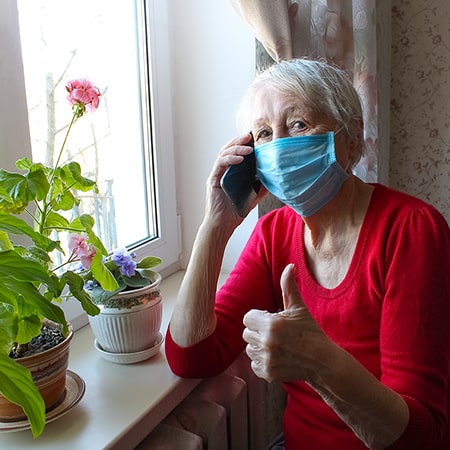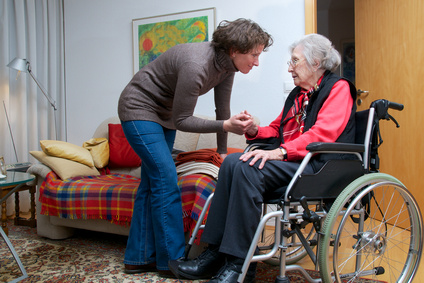
Pressure ulcers, often referred to as bedsores, are a painful and potentially serious condition that can affect individuals with limited mobility. These wounds can develop when pressure is applied to the same area of the body for an extended period, typically over bony prominences. Understanding the causes, risk factors, and prevention of pressure ulcers is essential for promoting better patient care.
What are pressure ulcers?
Find YOUR ideal care home NOW!
Pressure ulcers are localized injuries to the skin and underlying tissue, primarily caused by prolonged pressure on the skin. They can range from superficial redness to deep wounds that extend into muscle and bone. Common sites for pressure ulcers include the heels, hips, tailbone, and the back of the head in individuals confined to a bed.
Causes and risk factors
Several factors contribute to the development of pressure ulcers, including:
-
Pressure: Continuous pressure on the skin and soft tissues can reduce blood flow and damage cells.
-
Friction and shear: Rubbing or dragging the skin (caused by moving or sliding in bed) can lead to ulcers.
-
Immobility: Individuals who cannot change position or are bedridden are at higher risk.
-
Moisture: Excessive moisture from sweat or incontinence can soften the skin, making it more susceptible to damage.
-
Poor utrition: A lack of essential nutrients impairs the body's ability to repair damaged tissue.
-
Sensory impairment: Patients with conditions affecting their sensation may not feel the discomfort that prompts them to change positions.
-
Aging: Skin becomes thinner and less elastic with age, making it more vulnerable to injury.
Prevention and treatment
Preventing pressure ulcers is crucial, and it often involves a multidisciplinary approach:
-
Regular repositioning: Changing a patient's position frequently helps redistribute pressure and reduce the risk of ulcers.
-
Support surfaces: Specialized mattresses and cushions can help alleviate pressure and reduce the risk of ulcer development.
-
Good nutrition: Maintaining a well-balanced diet is essential for tissue repair and wound healing.
-
Skin care: Keeping the skin clean, dry, and well-moisturized helps prevent damage.
-
Education: Healthcare providers and caregivers should receive training on proper pressure ulcer prevention and management.
In cases where pressure ulcers do develop, treatment involves wound care, which may include cleaning, dressing changes, and, in severe cases, surgery to remove damaged tissue.
Risk factors and prevention strategies for pressure ulcers
| Risk Factor | How It Increases Risk | Prevention Strategy |
|---|---|---|
| Immobility | Inability to change positions increases prolonged pressure on certain areas. | Frequent repositioning, use of pressure-relieving mattresses. |
| Friction & Shear | Skin rubbing against sheets or movement in bed causes damage. | Use lifting devices instead of dragging, apply protective dressings. |
| Moisture | Excess moisture from sweat, urine, or wound drainage weakens skin. | Keep skin clean and dry, use absorbent materials or barrier creams. |
| Poor Nutrition | Deficiency in protein, vitamins, and hydration slows wound healing. | Maintain a high-protein diet with essential vitamins and minerals. |
| Age | Older adults have thinner, more fragile skin. | Provide extra skin care, use gentle repositioning techniques. |
Pressure ulcers are a serious concern, especially for individuals with limited mobility. They can lead to severe complications, including infections and extended hospital stays. The best approach is prevention, which includes proper care, repositioning, and addressing risk factors. It is essential for healthcare providers, caregivers, and patients themselves to be informed about the causes and prevention strategies, ultimately working together to reduce the incidence of pressure ulcers and improve the quality of care for those at risk.
FAQ:
1. What causes pressure ulcers?
Pressure ulcers are caused by prolonged pressure on the skin, leading to reduced blood flow and tissue damage. Factors like immobility, friction, moisture, and poor nutrition contribute to their development.
2. Who is most at risk for pressure ulcers?
Individuals with limited mobility, the elderly, those with chronic illnesses, and people with poor circulation are at higher risk.
3. What are the early warning signs of a pressure ulcer?
Early signs include red, tender skin that does not turn white when pressed, warmth, or a persistent painful area.
4. How can pressure ulcers be prevented?
Frequent repositioning, proper skin care, good nutrition, pressure-relieving surfaces, and hydration can help prevent ulcers.
5. What are the most common locations for pressure ulcers?
Common sites include the heels, hips, sacrum (tailbone), elbows, and back of the head.
6. How are pressure ulcers treated?
Treatment depends on the stage but may include dressings, antibiotics, debridement (removing dead tissue), and, in severe cases, surgery.
7. Can pressure ulcers lead to complications?
Yes, untreated pressure ulcers can cause infections, sepsis, osteomyelitis (bone infection), and prolonged hospital stays.
8. How often should a bedridden person be repositioned?
Repositioning should be done at least every 2 hours to reduce pressure and prevent sores.
9. Can pressure ulcers heal on their own?
Stage 1 ulcers may heal with proper care, but more severe ulcers require medical intervention.
10. What type of mattress helps prevent pressure ulcers?
Pressure-relieving or alternating-pressure mattresses help distribute weight evenly and reduce pressure points.
We are here to help you choose a care home or facility best suited to your needs. Do not hesitate to contact us on the following number: 0230 608 0055 or fill out this form.
Do you need a care home for yourself or your loved one?
Share this article :
Latest posts
You are looking for an establishment for your loved one ?
Get availability & prices
Fill in this form and receive
all the essential information
We would like to inform you of the existence of the opposition list for telephone canvassing.

.webp)









